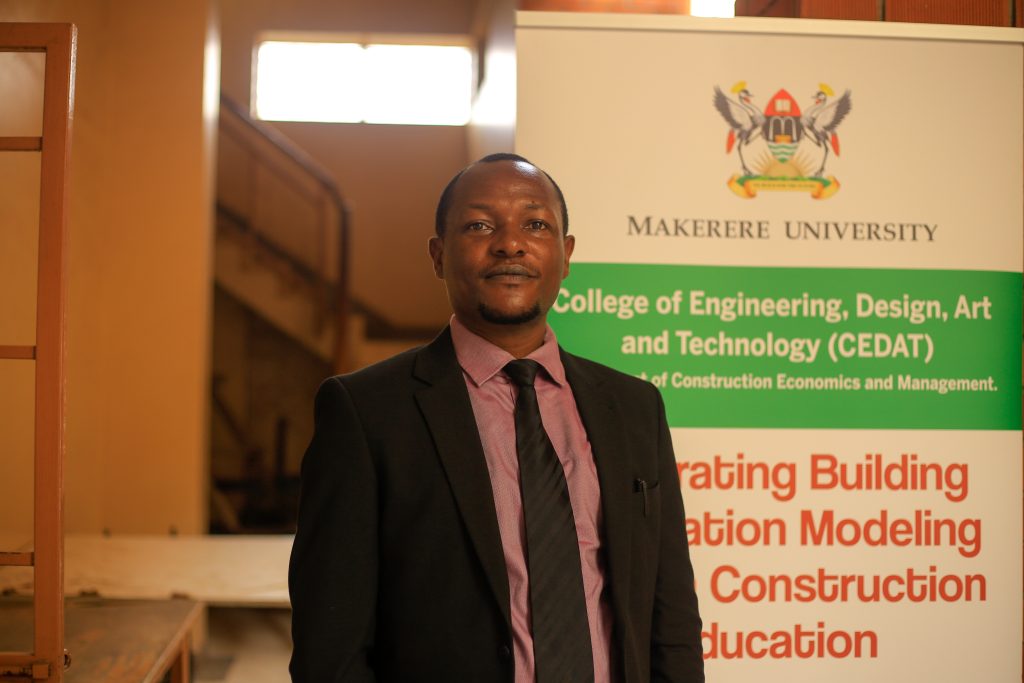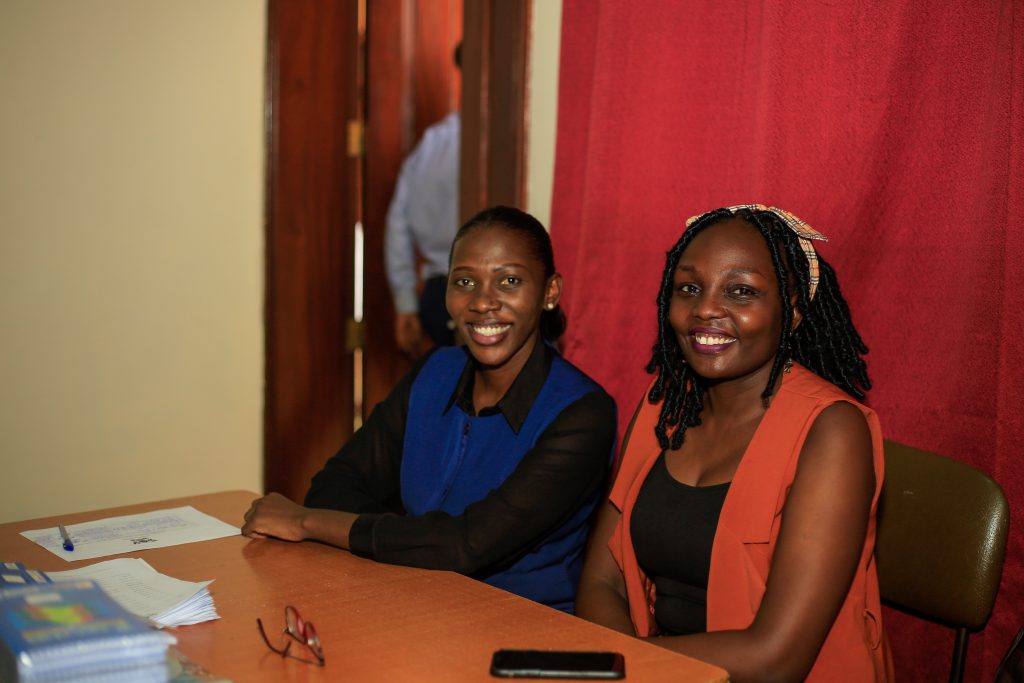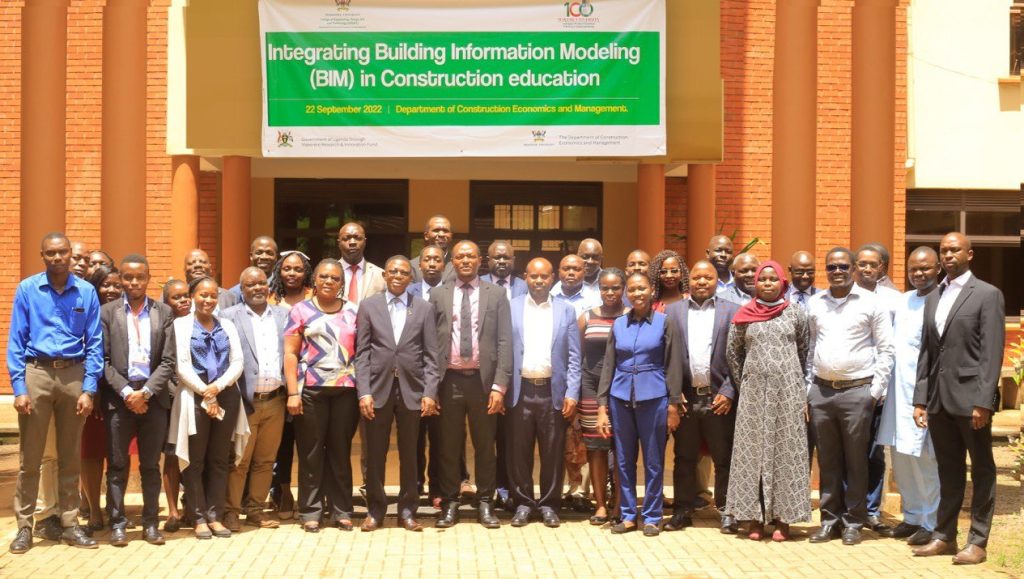
The Construction and Economics Department at the College of Engineering, Design, Art and Technology (CEDAT) is undertaking a study to explore the possibilities of mainstreaming Building Information Modelling (BIM) into the curricula.
The study supported by the Government of Uganda through the Makerere University Research and Innovations Fund (MaKRIF) is conducted by a team led by Dr. Pamela Achieng, lecturer in the Department of Construction Economics and Management at CEDAT. The Research team is comprised of Ms. Wesonga Rachael, Mr. Semanda Julius, Mr. Odongkara Billy Brian, Mr. Tom Mukasa and the Departmental Head, Dr. Nathan Kibwami.
During a stakeholder engagement held at the College on the 22nd of September 2022, it was explained that the construction industry contributes 12% of the GDP which was also gradually increasing, and this was attributed to the increasing urbanization and population growth, which presented a need for it to be reviewed.
The Vice Chancellor Makerere University, Prof. Barnabas Nawangwe who was represented at the meeting by the Director, Directorate of Research and Graduate Training Prof. Buyinza Mukadasi officiated at the opening ceremony. In his address, Prof. Nawangwe welcomed the stakeholders that included the Academia, Scientists, Researchers and Scholars. He said the meeting was a multi-disciplinary platform that enabled the discussion on the recent trends, innovations and practical challenges encountered in construction engineering and management with a view of informing the process of reviewing the academic curricula.
Prof. Nawagwe observed that despite the rapid global growth of urban conglomerates, the increased construction activity in the country and the fact that the construction industry was one of the largest consumers of resources and produced enormous amounts of waste, it was one of the least digitalized. He observed that the policy of circular economy that stressed the tenets of Reduce, Reuse, Recycle, and Recover was increasingly becoming important and urgent in the academic curricula given the increasing levels of urbanization and scarcity of resources.
The Vice Chancellor noted that the issue of developing more suitable curricula for the construction management programs had been a subject of debated by the faculty for long. Building Information Modelling (BIM) he observed, offered the potential to achieve objectives like project cost reduction, increasedproductivity and quality as well as timely delivery of work.
BIM, which he described as the use of computer generated models to stimulate the planning, design, construction and operation of a facility was one of the viable solutions. He emphasized that Construction management as a discipline needed to maintain a strong identity positioned between Architecture and Engineering, with the graduates well prepared to meet the needs of the construction Industry.
Prof. Nawangwe noted that digital technologies were vital for the department to improve on the learning environment, and it required a revision of the curricula by incorporating BIM and other computer aided technology to improve the performance of the built environment sector.
Dr. Nathan Kibwami, the Head of Department, Construction Economics and Management at CEDAT noted that BIM was a collaboration that needed Architects, Quantity Surveyors, and Engineers to improve on the Construction Industry. He noted that there were a lot of challenges in the industry and that working together would help come up with better designs and structures. He charged the sister departments in the college to share this knowledge and help have BIM mainstreamed into their programs.
The Principal Investigator of the project Ms. Pamela Opio Achieng noted that BIM in Africa was yet to be appreciated. She said there were several theories that could be applied following consensus from the debates in order to reach a common ground. She pointed out that the review as proposed would take on the best strategies either as stand-alone courses or across existing disciplines. She said this could be realized when stakeholders agreed on the challenges at hand like not having the teachers trained in BIM as it is now, as well as the need to impart skills and not only BIM to students. She further noted that the curricula could not be reviewed without the involvement of the Industry.
Following discussions clusters that reviewed the program as it stands currently and the lay out of the modules, stakeholders identified the way forward, taking cognizance of the challenges of taking on BIM in the curricula. It was however agreed that there was need to develop industry led curricula, train market ready and well-seasoned graduates of Construction Economics and Management.
The stakeholders at the consultative meeting included representatives from Professional Bodies like Uganda Institute of Professional Engineers (UIPE), Association of Consulting Engineers, Surveyors Registration Board, Architects Registration Board, Engineers Registration Board among others.
The Academia was represented by the host Department of Construction Economics and sister departments at CEDAT, and Kyambogo University.
The Ministries and other Government agencies included Ministry of Works and Transport, Ministry of Education and Sports, Ministry of Housing and Urban Development and Uganda National Roads Authority.
The discussion on the integration to Building Information Modelling in Construction Education comes in at a time when many countries are increasingly making BIM mandatory fir infrastructure projects. It has also been realized that projects that used BIM reduced costs and project duration.
The study however established that financial constraints and lack of training opportunities were barriers to BIM adoption in Uganda’s construction Industry, with lack of skilled trainers as another hindrance.

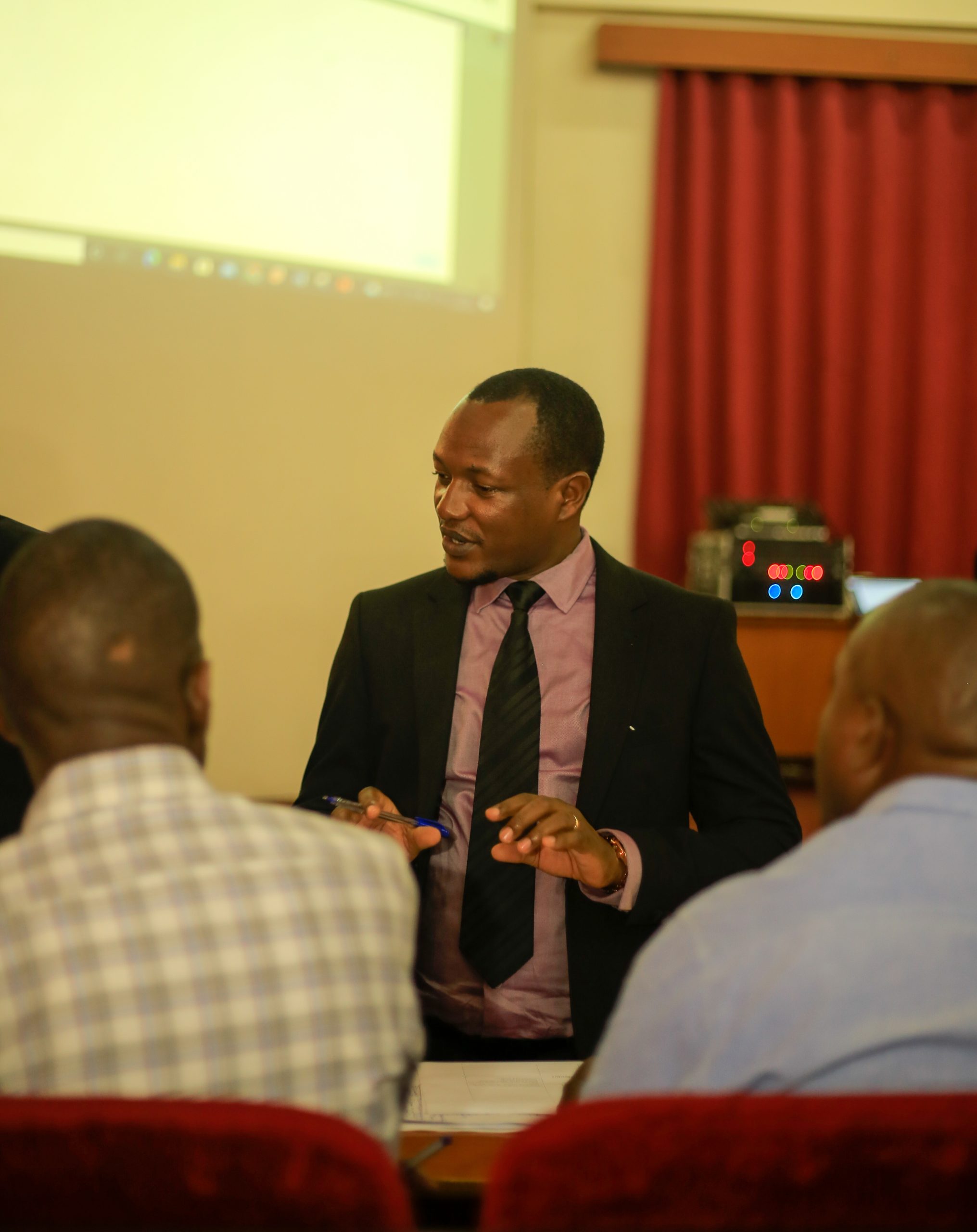


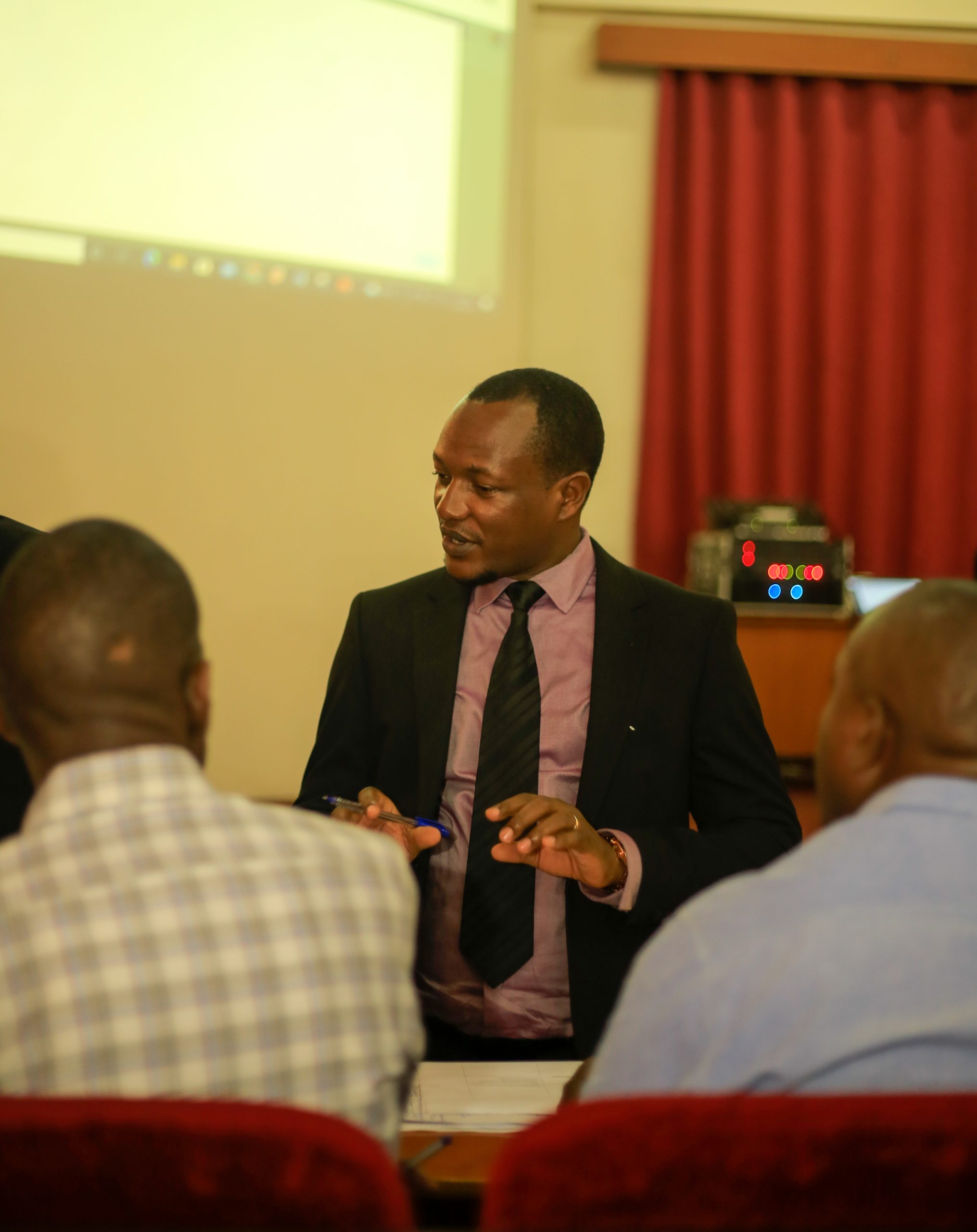
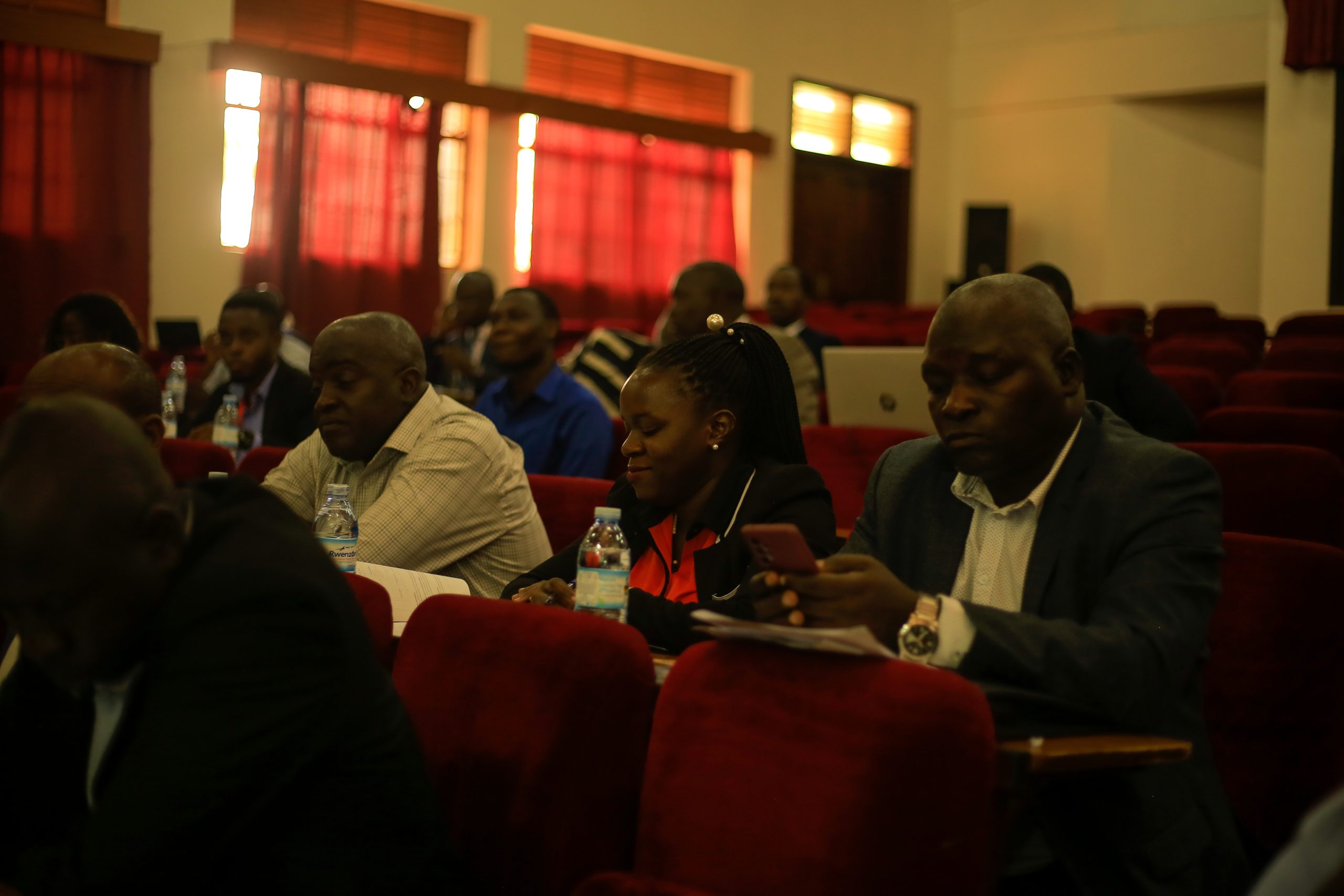
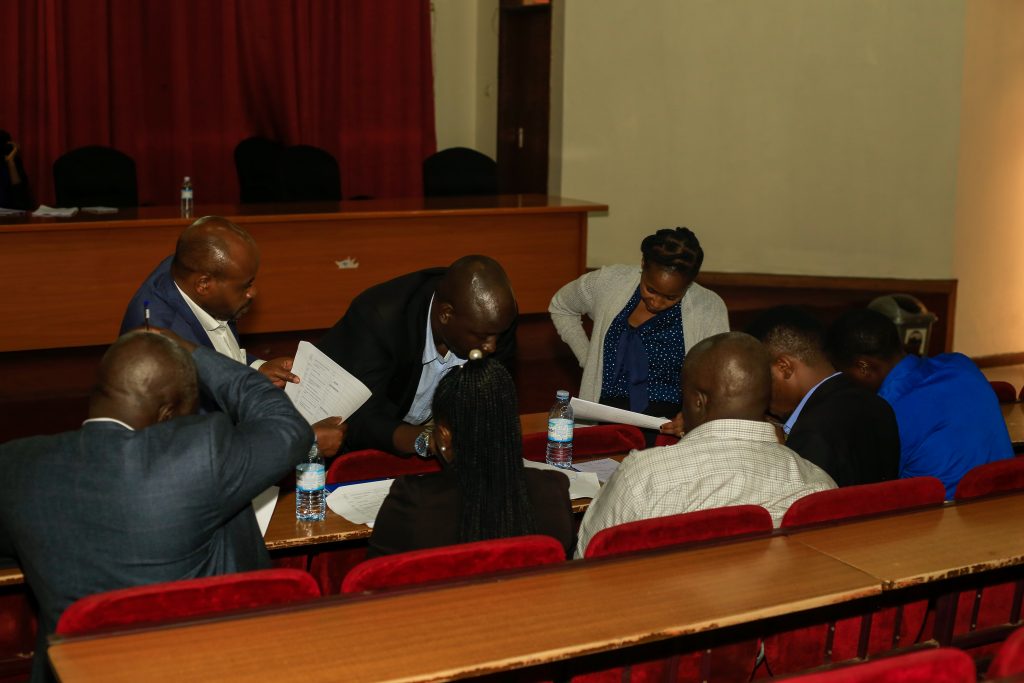

Written by Harriet Musinguzi, Principal Communication Officer, CEDAT.
Posted by Alex Isemaghendera, Web Administrator, CEDAT



